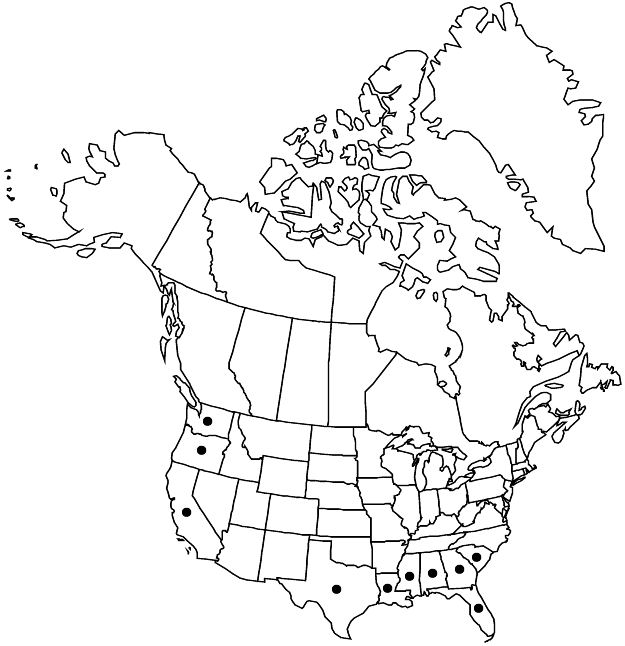Oxalis debilis
Nov. Gen. Sp. 5(fol.): 183; 5(qto.): 236. 1822.
Herbs perennial, acaulous, rhizomes and stolons absent, bulblets clustered; bulb scales 3-nerved. Leaves basal; petiole 10–25 cm; leaflets 3, green to yellowish green, rounded-obcordate, 17–40(–50) mm, lobed 1/6–1/5 length, lobes apically convex, adaxial surface hirsute, adaxial surface glabrous, oxalate deposits in dots at least around distal margins, often evenly over surface. Inflorescences irregular cymes, (3–)8–14(–28)-flowered; scapes 15–28 cm, moderately villous to glabrate. Flowers mostly homostylous, infrequently tristylous; sepal apices with 2 orange tubercles; petals violet to lavender or rose purple, 10–16(–20) mm. Capsules not observed. 2n = 14, 28, rarely 35.
Phenology: Flowering Dec–May, rarely again in summer.
Habitat: Fencerows, yards, flower beds, roadsides, disturbed areas, hammock margins, sandy live oak woods, mesic woods, stream and river terraces.
Elevation: 0–100 m.
Distribution

Ala., Calif., Fla., Ga., La., Miss., Oreg., S.C., Tex., Wash., South America, introduced also in Mexico, West Indies, Central America, Europe, se Asia (Malesia), Pacific Islands, Australia.
Discussion
Oxalis debilis appears to be spreading rapidly in the United States. The species produces numerous bulblets in a basal cluster and apparently also can spread laterally by production of bulblets at the tips of filiform roots or rhizomes; it can form large, dense colonies. A. Lourteig (1980) noted that plants of this species occasionally fruit but consistently reproduce through abundant bulblets. They apparently are seed-sterile in North America.
Oxalis corymbosa and O. debilis were differentiated by A. Lourteig (2000) primarily by the distribution of oxalate deposits in the leaf lamina. In O. debilis, the dotlike deposits are crowded along the margins and absent to distinctly less abundant elsewhere. In O. corymbosa, the deposits are evenly distributed over the whole lamina. In their native range in South America, the two expressions are broadly sympatric and intermediates are common, as they are in the flora area. Intermediates have the oxalate dots along the margins as well as over the whole surface or sometimes mostly on the outer third of the blades, near the margins. There is no justification for formal recognition of two entities.
Selected References
None.